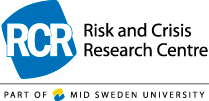Collaboration in an Emergency - a complex encounter between different actors
This project studies the roles of municipal emergency services, NGOs and individual volunteers.
There is often a strong commitment to communities when emergencies occur. People want to help. Aid is provided by NGOs and individual players. The general public as an actor, however, is often invisible in the emergency context, even though individuals may have begun some actions before the emergency services are in place.
We do not know much about what happens in the meeting between the public emergency services and the public, such as what the different groups together contribute in a rescue operation, or how a collaboration between them develops over time.
Voluntary organizations are driven by different principles and logic. Some organizations are religious, others are associations of various professions while still others organize volunteers who have different skills. One aim of the project is to increase knowledge and understanding of the various organizations logic, and in that way facilitate collaboration between emergency services and voluntary organizations. It is important to understand what controls the various actors' actions and thoughts to increase knowledge about what help they could provide to major emergencies. Although individual volunteer contributions in a complex emergency is important, it is important as well to gain further knowledge and a better understanding of the interplay between organized and non-organized actors. A focus is placed on operators understanding the situation and the value that they create on the task.
A further aim is to generate knowledge about the players interaction process: how relationships and meetings between municipal emergency services, NGOs and individual volunteers at the onset and through the development of the situation develop for long-term complex emergency operations in Sweden.
We will mainly carry out our study using qualitative methods and fieldwork.

